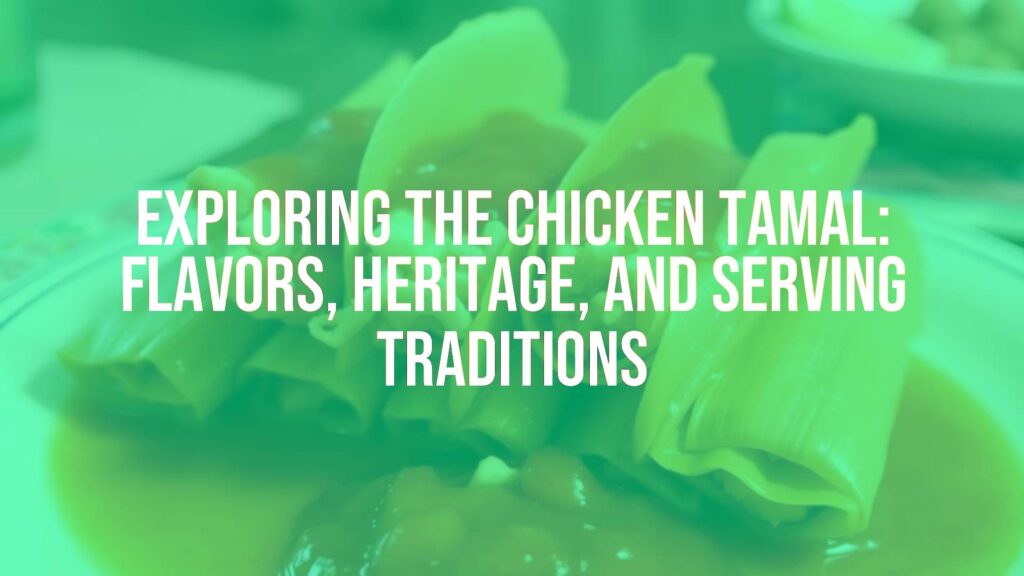Introduction to the Chicken Tamal
The chicken tamal stands as one of the most beloved and widely enjoyed varieties of tamales in Latin American cuisine. Known for its succulent filling, comforting flavors, and satisfying texture, the chicken tamal is a staple at family gatherings, celebrations, and street food markets as well as a cherished homemade treat. Its appeal lies in the harmonious blend of tender chicken, spiced masa dough, and savory sauces, all encased and steamed within a corn husk or banana leaf.
Historical Significance and Regional Roots
Though the invention of tamales predates written history, chicken tamales have developed into an iconic dish with deep roots in Mesoamerican culture, evolving over centuries. While early tamales often featured game or pork, the introduction of domesticated chicken to the Americas led to new and enduring interpretations of the dish. Chicken tamales now occupy an important place in Mexican, Guatemalan, and Central American culinary traditions, with each region offering its unique spin based on available ingredients and local tastes.
Key Components of a Chicken Tamal
The integrity of a chicken tamal rests on three essential elements: the masa, the filling, and the wrapper. Masa, made from nixtamalized corn, serves as the doughy exterior and offers a lightly sweet, earthy flavor. The filling consists of cooked, shredded chicken, often simmered with a sauce such as red chile, green tomatillo, or mole, which adds moisture and rich, complex notes. Traditionally, tamales are wrapped in dried corn husks, though banana leaves are popular in southern regions for their aromatic contribution.
Distinctive Flavor, Texture, and Appearance
A well-prepared chicken tamal is characterized by its satisfying contrast in textures and flavors. The masa is soft and tender yet cohesive, gently absorbing the juices from the savory chicken filling. Depending on the sauce used, flavors can range from mild and bright (green tomatillo) to deep, smoky, and slightly spicy (red chile or mole). Tamales are typically oblong, wrapped snugly in husks or leaves, which are removed before eating to reveal the aromatic, piping-hot contents within.
Varieties and Regional Differences
Chicken tamales are as diverse as the regions from which they hail. In Mexico, you might find tamales de pollo en salsa verde, featuring tangy tomatillo sauce, or tamales de mole, where the chicken is paired with rich, chocolate-infused mole. Oaxacan tamales, frequently wrapped in banana leaves, are notable for their larger size and distinctive flavor. In some Central American versions, masa is often fluffier, and fillings might be seasoned with local herbs or even garnished with olives, capers, or vegetables.
Ingredient Alternatives and Customizations
While tradition guides the basic structure, there is room for flexibility. People seeking a lighter dish may opt for white or low-fat chicken cuts or substitute vegetable shortening for traditional lard in the masa. Vegetarian alternatives may fill tamales with seasoned tofu or mushrooms, accompanied by salsa similar to those used with chicken. For a different taste profile, home cooks often experiment with chili varieties or add mild cheese alongside the chicken.
Serving Suggestions and Pairings
Chicken tamales are often served hot, as a main course or hearty snack. They pair beautifully with Mexican crema, tangy salsas, or pickled vegetables, such as escabeche. To round out the meal, they can be accompanied by refried beans, rice, or a crisp salad. To drink, atole and champurrado (corn-based hot beverages) or a light lager make traditional companions, while coffee or agua fresca complement the dish in a more casual setting.
Conclusion
The chicken tamal endures not only for its comforting taste but also for its role as a culinary symbol of cultural heritage and togetherness. Rich with local character and adaptable to modern tastes, the chicken tamal continues to delight palates far and wide, offering an authentic taste of food history with every bite.

